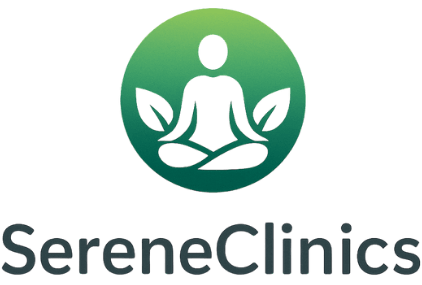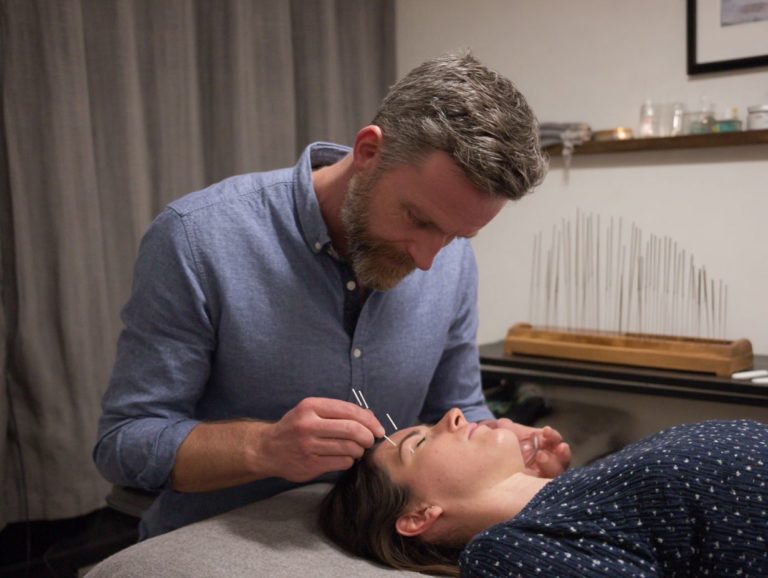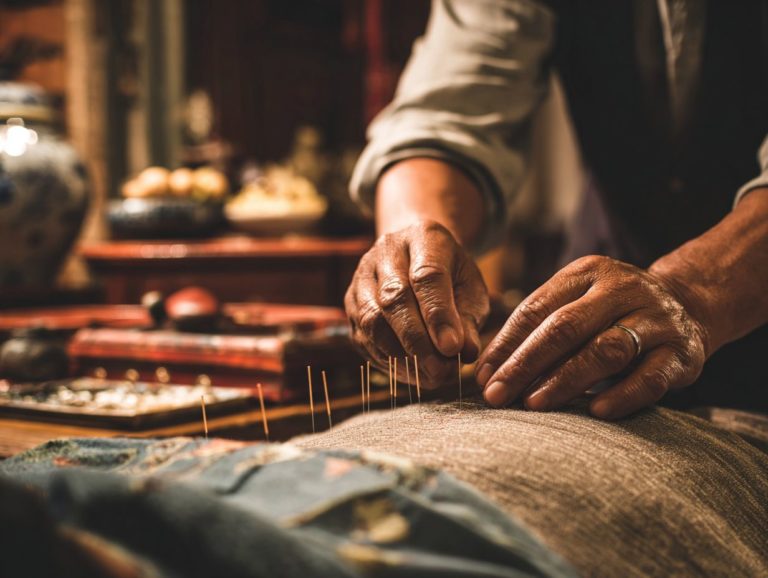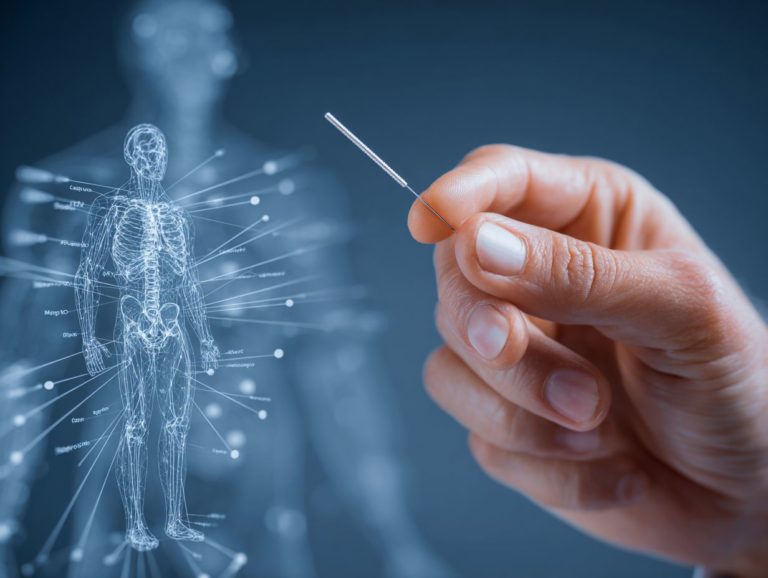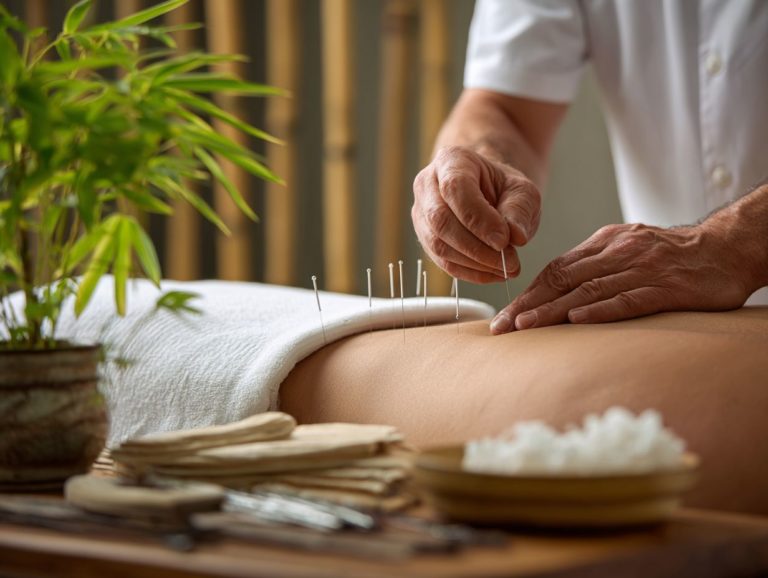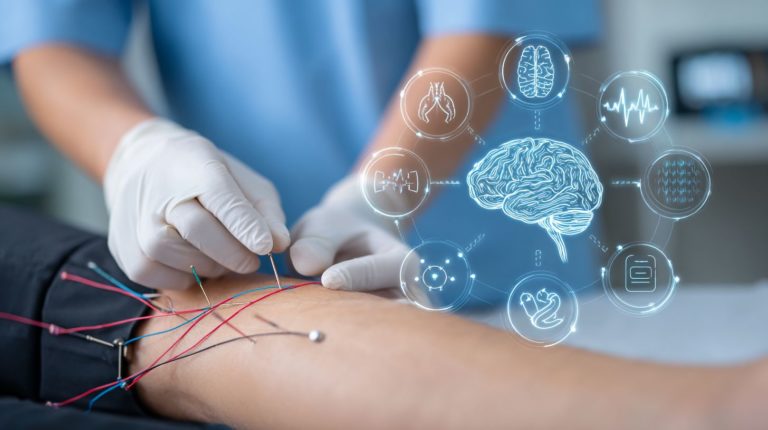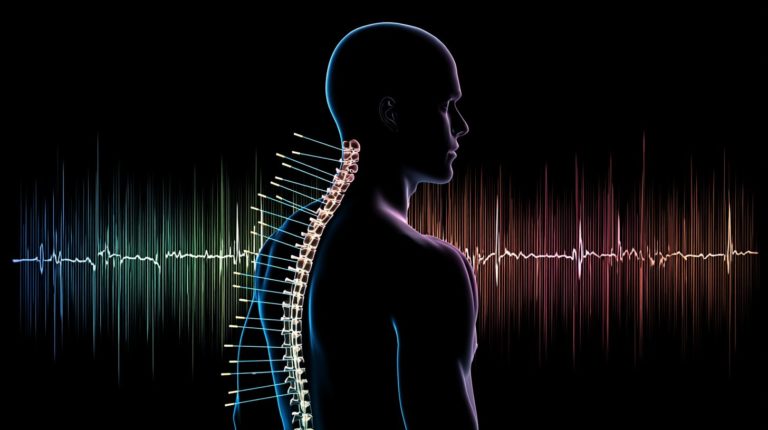Manual Acupuncture: Techniques, Differences, and US Certification
Manual acupuncture is a traditional healing practice that involves the careful insertion of needles into specific points on the body to restore balance and promote well-being.
This practice includes various techniques, such as Tui Na, Shiatsu, and Japanese acupuncture, and it differs from electroacupuncture.
The many benefits of manual acupuncture include pain relief to stress reduction, and information about the US certification process for practitioners is included.
Learn the details of this ancient art and how it’s used today.
Key Takeaways:
Contents
- 1 What is Manual Acupuncture?
- 2 What are the Techniques used in Manual Acupuncture?
- 3 What are the Differences between Manual Acupuncture and Electroacupuncture?
- 4 What are the Benefits of Manual Acupuncture?
- 5 What is the US Certification Process for Manual Acupuncture?
- 6 Acupuncture in the United States: 2023 Statistics
- 6.1 Licensed Acupuncturists: Total Licensed Acupuncturists
- 6.2 Licensed Acupuncturists: Acupuncturist Distribution
- 6.3 Licensed Acupuncturists: Jurisdiction and Education
- 6.4 1. Education Requirements
- 6.5 2. National Certification Exam
- 6.6 3. State Licensing Requirements
- 6.7 4. Continuing Education Credits
- 7 Frequently Asked Questions
- 7.1 What is manual acupuncture?
- 7.2 What are the techniques used in manual acupuncture?
- 7.3 What are the differences between manual acupuncture and other forms of acupuncture?
- 7.4 What are the benefits of manual acupuncture?
- 7.5 Are there any risks associated with manual acupuncture?
- 7.6 How can I become certified in manual acupuncture in the US?
What is Manual Acupuncture?
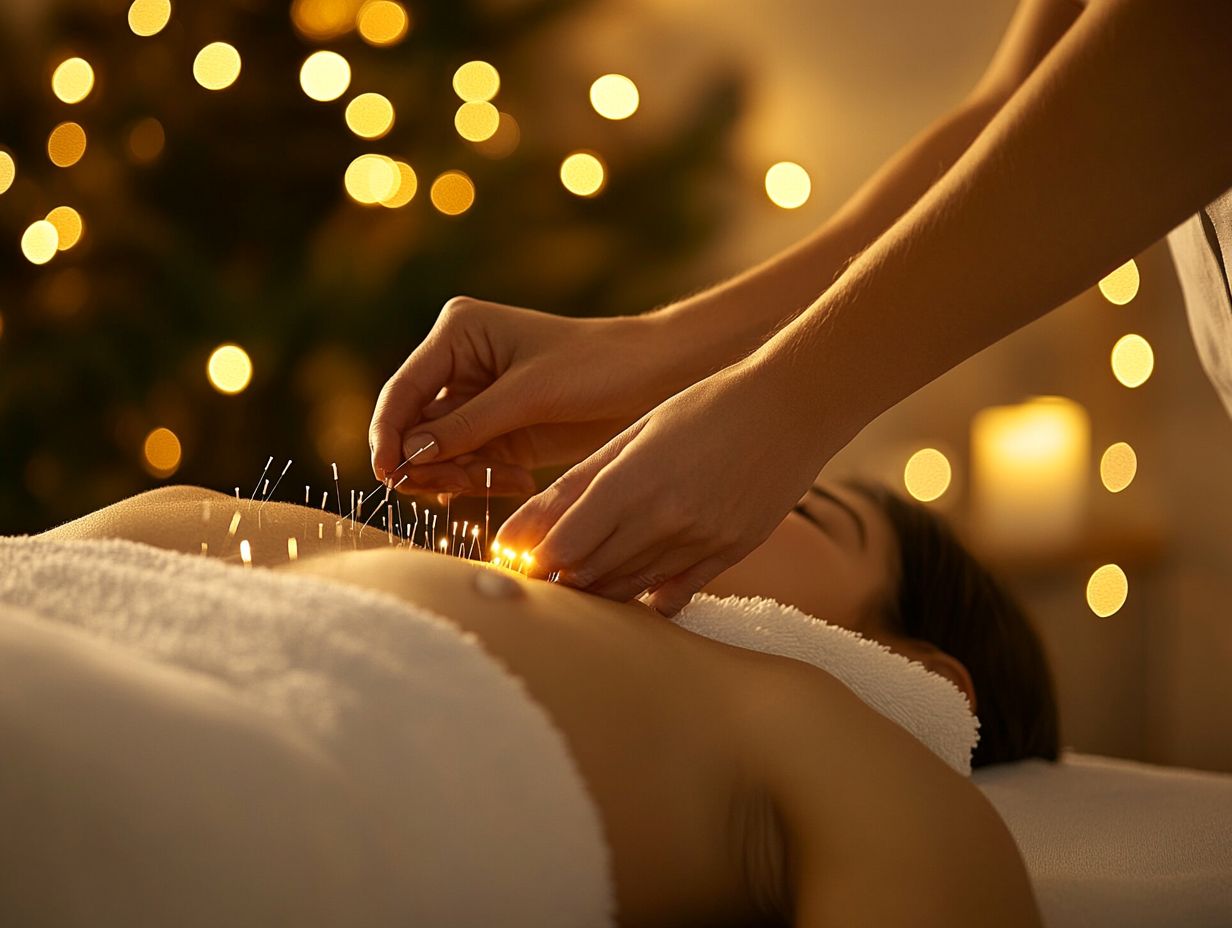
Manual Acupuncture is a traditional healing method rooted in Traditional Chinese Medicine (TCM). It involves inserting thin needles into specific points to improve Qi flow and address different health issues.
This old practice works to restore balance in the body, helping with pain relief and overall health benefits. Healthcare professionals use different methods to provide treatment customized to what each patient needs, addressing both physical symptoms and emotional problems to help achieve complete recovery. As noted by the respected source, Mount Sinai, the effectiveness of TCM lies in its holistic approach to health, focusing on both physical and emotional well-being. For more details, their Traditional Chinese Medicine Information provides a comprehensive overview.
What are the Techniques used in Manual Acupuncture?
Manual acupuncture has different styles such as Tui Na, Shiatsu, Japanese Acupuncture, Korean Acupuncture, and Vietnamese Acupuncture, each providing its own healing method.
These techniques involve stimulating acupuncture points according to Traditional Chinese Medicine to improve Qi flow and address various health issues.
Licensed acupuncturists use different methods to create treatment plans that fit their patients’ specific needs.
1. Tui Na
Tui Na is a hands-on treatment in Traditional Chinese Medicine that uses acupressure and massage along with acupuncture ideas to improve Qi flow and relieve different health issues.
Originating over 2,000 years ago, Tui Na reflects the rich philosophical foundations of Traditional Chinese Medicine, which emphasizes the balance of yin and yang for optimal health.
Its practical applications range from treating musculoskeletal problems to aiding recovery from injuries and improving circulation. By manipulating the body’s energy points and meridians, practitioners can facilitate a state of deep relaxation and healing.
This method works alongside traditional acupuncture to address specific health problems. It also helps prevent health issues by reducing stress and improving overall body balance.
2. Shiatsu
Shiatsu is a form of manual therapy that uses finger pressure along energy pathways to promote healing and balance, drawing heavily from the concepts found in acupuncture and Traditional Chinese Medicine.
Emerging in Japan in the early 20th century, this therapy seamlessly integrates various techniques such as stretching, joint rotations, and pressure application to aid in relieving tension and enhancing overall health.
Shiatsu practitioners think that by pressing certain spots on the body’s energy paths, similar to acupuncture, blockages can be cleared, allowing energy, called ‘ki’, to move without obstruction.
This method is especially helpful for people looking to reduce stress and manage pain effectively. It uses the body’s own healing power while helping you feel deeply relaxed and refreshed.
3. Japanese Acupuncture
Japanese Acupuncture uses mild needle techniques, prioritizing patients’ comfort by treating them based on their unique needs.
This approach often involves a careful diagnostic process that uses touch, observation, and a thorough knowledge of traditional Japanese medicine.
Unlike other acupuncture styles that may prioritize the insertion of needles into specific points solely based on pathways or meridians, this method involves a more intuitive connection between practitioner and patient.
By concentrating on minor changes in energy and the specific traits of each person, practitioners develop a customized treatment plan that encourages relaxation and smooth energy movement.
Focusing on small details helps make patients feel more comfortable and supports their recovery, turning each session into a unique experience towards better health.
4. Korean Acupuncture
Korean Acupuncture uses acupressure techniques and specific acupuncture points, mixing elements of natural medicine to get better results.
This unique method targets both the body and emotional health, acknowledging how different health problems are linked.
Practitioners of this method use a special system of points that are often different from those typically found in traditional Chinese acupuncture. This allows for customized treatments that focus on specific issues like pain, stress, and digestive problems.
Korean Acupuncture often uses gentle techniques and other treatments like herbal medicine to support healing and balance.
This form of acupuncture centers on the individual, changing to fit each person’s requirements, making it effective for better overall health.
5. Vietnamese Acupuncture
Vietnamese Acupuncture is characterized by its innovative techniques and its integration with herbal medicine, often utilizing pulse diagnosis to tailor treatment plans to individual health conditions.
This method focuses on the patient’s individual makeup and energy patterns, helping practitioners create treatment plans that fit the patient’s particular requirements.
It usually combines old methods that show Vietnam’s cultural history, like using acupuncture spots together with certain herbal mixes to improve healing results.
This approach deals with physical issues and also takes into account emotional and spiritual health, providing a treatment that encourages balance and recovery from the inside.
What are the Differences between Manual Acupuncture and Electroacupuncture?
Manual Acupuncture and Electroacupuncture are techniques for improving health, each with its own method.
Manual acupuncture involves placing needles at certain points to influence the body’s energy. Unlike regular acupuncture, electroacupuncture applies electrical currents through the needles to increase their therapeutic benefits. According to Healthline, this method is backed by scientific evidence supporting its effectiveness in enhancing therapeutic outcomes (read more about the process and effects here).
Knowing these distinctions can help patients decide on their treatment options.
1. Stimulation Method
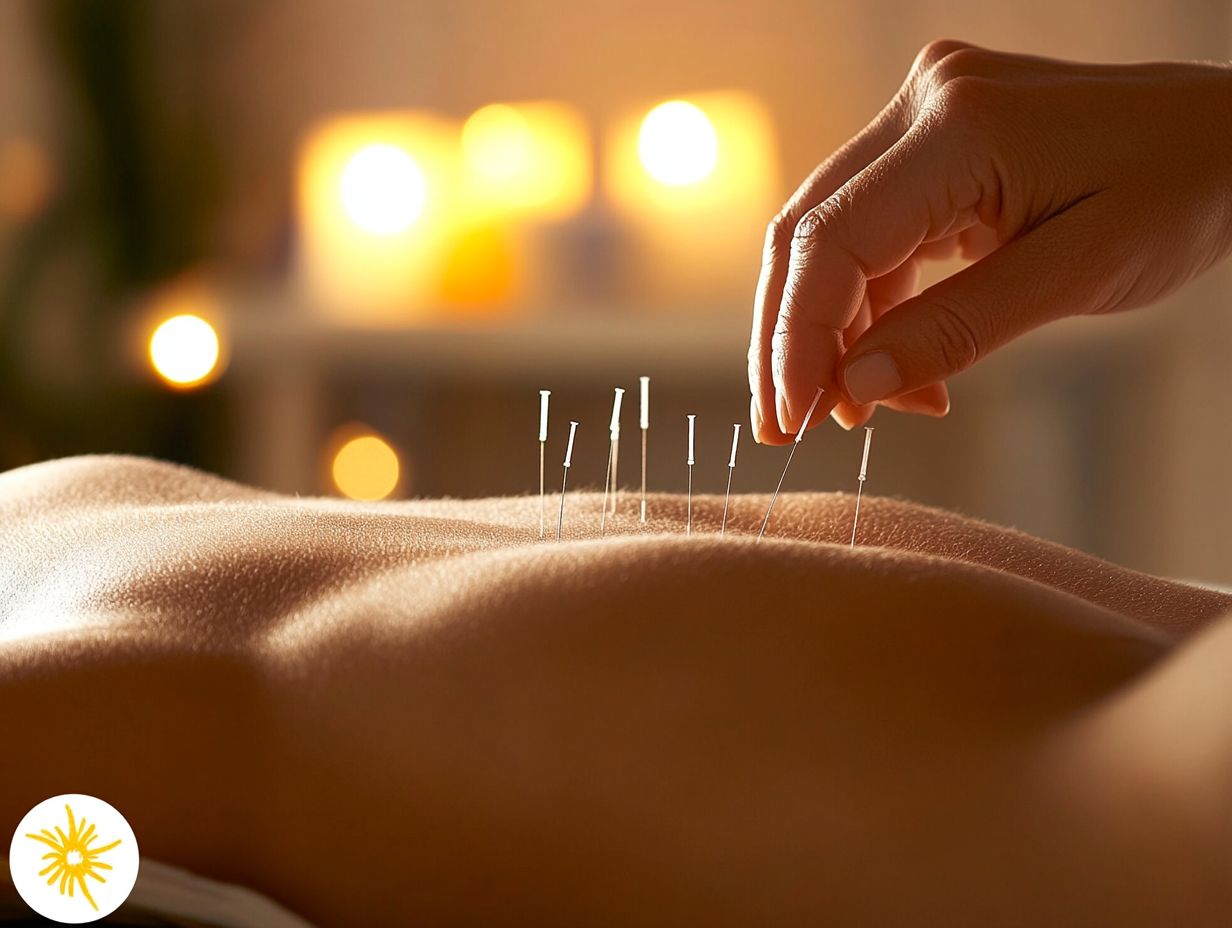
In Manual Acupuncture, needles are inserted by hand. Electroacupuncture uses electrical currents to increase the effect at the acupuncture points.
Each of these techniques offers distinct advantages that can significantly impact treatment outcomes and patient experiences.
Manual Acupuncture can help patients feel calm and is great for reducing stress and anxiety. On the other hand, Electroacupuncture might work better for problems needing more intense treatment, like ongoing pain or muscle issues.
The stronger stimulation from the electrical currents improves blood flow and can increase the therapeutic effects, which may result in faster recovery times.
By learning the specific advantages of each method, healthcare providers can customize their treatment plans to improve comfort and effectiveness for people with different health requirements.
2. Depth of Needle Insertion
In Manual Acupuncture, the depth of needle insertion is often adjusted based on the practitioner’s techniques and the specific health condition treated, while Electroacupuncture may require a more standardized approach.
Doctors thoroughly evaluate each patient’s unique needs, considering aspects like body makeup, the type of illness, and general sensitivity.
For instance, a practitioner might choose a shallower insertion for a person with increased sensitivity or certain anxiety conditions, ensuring comfort and effectiveness of the treatment.
On the other hand, inserting needles deeper can be better for long-term pain relief, as it allows for more thorough stimulation of muscles and tissues.
Finding the right mix of technique and patient comfort is very important because it affects how well both methods work in reaching the wanted therapeutic results.
3. Speed of Treatment
The speed of treatment in Electroacupuncture can be faster due to the electrical stimulation, whereas Manual Acupuncture typically requires a more gradual approach to achieve optimal results.
This difference in treatment speed can significantly influence a patient’s experience and outcomes.
For example, Electroacupuncture is often preferred for acute pain conditions, as the rapid stimulation can provide immediate relief and improve overall satisfaction. Conversely, Manual Acupuncture may be more beneficial for chronic conditions, where a slower, more contemplative approach allows for deeper relaxation and healing.
Though faster treatments might appeal to those looking for immediate relief, they might not tackle root problems as well as slower methods. Therefore, it’s important to think carefully about the illness being treated.
4. Types of Needles Used
Manual Acupuncture primarily uses traditional acupuncture needles, while Electroacupuncture may employ specialized needles designed for electrical stimulation.
These specific types of needles are used for varying functions in acupuncture treatments.
Manual Acupuncture typically involves inserting thin, sterilized needles into specific points on the body, allowing the practitioner to manipulate them precisely by hand.
In contrast, Electroacupuncture uses needles that carry electrical currents to increase the stimulation of acupuncture points, which may result in stronger healing effects.
The type of needle used can greatly affect both how well the treatment works and how comfortable the patient feels, as some people may be more sensitive to specific needle shapes or methods.
Careful choosing can improve the patient’s experience and results.
What are the Benefits of Manual Acupuncture?
Manual Acupuncture offers several benefits, such as reducing pain, decreasing stress, and improving health. It is an important treatment for different health issues.
Patients often experience less ongoing pain, better emotional well-being, and a higher quality of life with this treatment. For a deeper dive into how acupuncture effectively provides pain relief, you might find our detailed analysis on Acupuncture: Pain Relief Uses, Techniques, and Effectiveness enlightening.
Licensed acupuncturists tailor treatments to each person’s needs to get the most health benefits. For those interested in a comprehensive overview, Medical News Today covers the full spectrum of acupuncture’s uses, benefits, and risks.
1. Pain Relief
One of the most significant benefits of Manual Acupuncture is its ability to provide effective pain relief for chronic conditions, such as musculoskeletal disorders and nerve-related issues.
This old method has become popular as a real option for people looking to ease ongoing back pain, arthritis, and even headaches. Many patients say they feel less pain after only a few sessions, crediting acupuncture’s overall method for their recovery.
One person shared that after enduring intense shoulder pain for years, Manual Acupuncture reduced her symptoms and increased her mobility.
These testimonials indicate that this approach helps recovery by activating the body’s natural pain-relief hormones, offering a good option for people dealing with chronic pain.
2. Stress Reduction
Manual Acupuncture is also recognized for its positive effects on stress reduction, often addressing emotional issues that contribute to mental and physical health challenges.
This traditional practice engages the body’s meridians, enhancing the flow of energy known as ‘qi.’ By strategically inserting fine needles into specific points, it stimulates the nervous system, promoting a state of relaxation that counteracts the body’s stress response.
Research indicates that acupuncture can lead to a decrease in cortisol levels, the hormone primarily associated with stress. A study published in the Journal of Alternative and Complementary Medicine found that participants who received regular acupuncture treatments reported significant reductions in anxiety and improved overall emotional health.
Evidence shows this method reduces stress symptoms and helps strengthen the link between mind and body, improving emotional strength.
3. Improved Sleep
Many patients report improved sleep quality after undergoing Manual Acupuncture treatments, which can help alleviate issues such as insomnia and restless leg syndrome.
This ancient practice involves stimulating specific points on the body that are known to promote relaxation and balance.
Research indicates that acupuncture can lead to a significant reduction in the time it takes to fall asleep and improve overall sleep duration. For example, studies have found that about 70% of people sleep better after regular acupuncture treatments.
Key acupuncture points such as Yintang, known as the ‘Hall of Impression,’ and Shenmen, located on the heart line, help with relaxation and lower anxiety, which are important for getting good sleep.
4. Improved Digestion
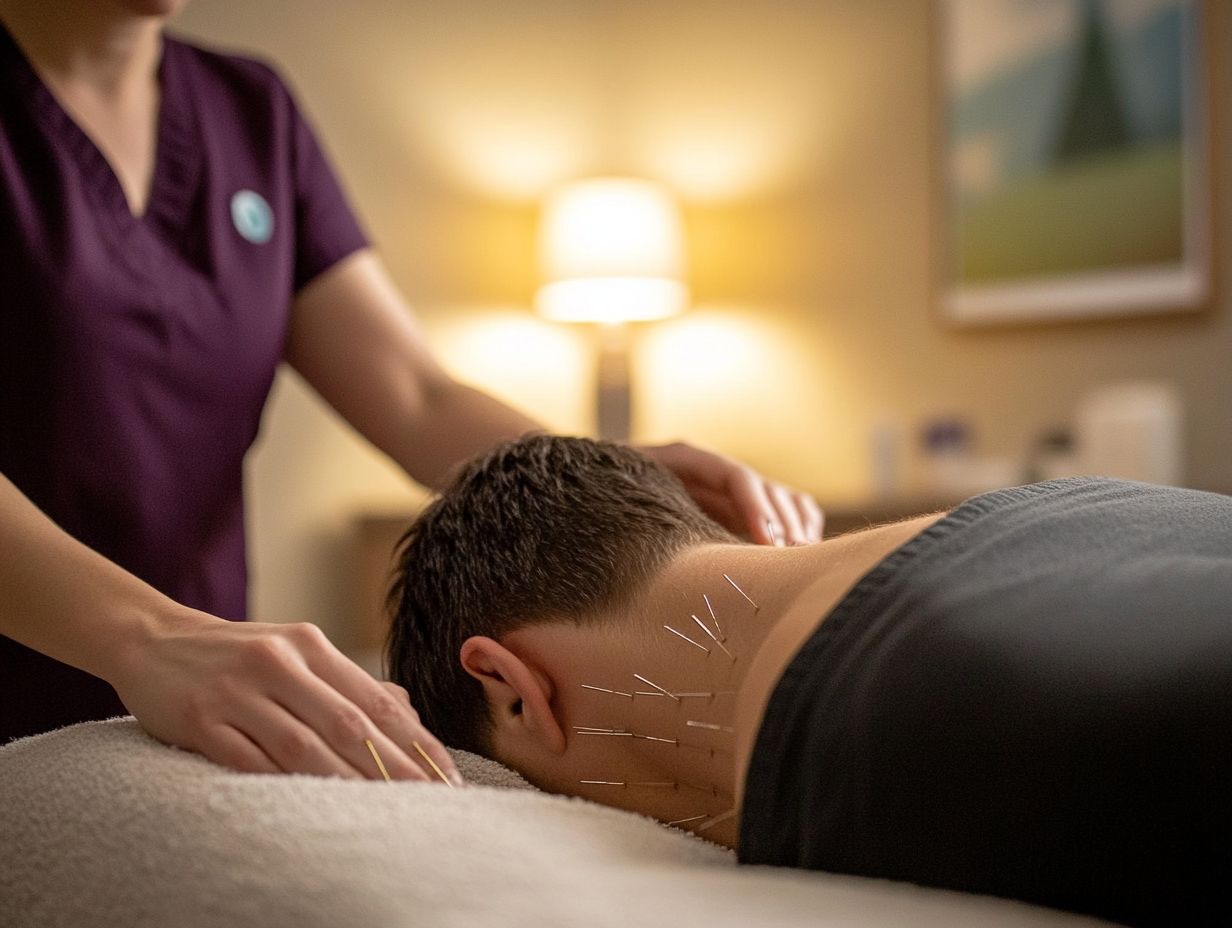
Manual Acupuncture can aid in improving digestion by targeting specific acupuncture points that regulate the digestive system and promote overall metabolic health.
This traditional approach has been shown to reduce stomach problems, improve nutrient absorption, and increase appetite in patients.
By harmonizing the flow of energy through the body, acupuncture can reduce inflammation and balance gut microbiota, leading to improved gastrointestinal health.
Research shows that people receiving acupuncture often feel less bloated and uncomfortable, and many are happier with their meals.
Testimonials from patients reveal that consistent sessions can lead to a significant reduction in digestive disorders, illustrating the power of acupuncture as a complementary therapy for digestive wellness.
5. Boosted Immune System
Another benefit of Manual Acupuncture is its ability to strengthen the immune system, helping the body fight off illnesses and heal more effectively from health problems.
This old method includes stimulating certain acupuncture points, like LI4 (Hegu) and ST36 (Zusanli), which are believed to improve immune function. Studies indicate that acupuncture can raise the number of immune cells such as natural killer (NK) cells and T lymphocytes, helping the body fight off harmful germs better.
Doctors have found that regular sessions lessen the number of colds and flu and help patients recover more quickly. Acupuncture affects the body’s hormone systems and helps manage stress. It works alongside other treatments to improve health and strength.
What is the US Certification Process for Manual Acupuncture?
The US certification process for Manual Acupuncture is a thorough system that makes sure practitioners are properly trained and licensed. This process includes finishing set education requirements, passing a national certification exam, and meeting state licensing requirements.
Together, these steps maintain the quality of practice in the field of acupuncture.
Acupuncture in the United States: 2023 Statistics
Acupuncture in the United States: 2023 Statistics
Licensed Acupuncturists: Total Licensed Acupuncturists
Licensed Acupuncturists: Acupuncturist Distribution
Licensed Acupuncturists: Jurisdiction and Education
The Acupuncture in the United States: 2023 Statistics gives a complete summary of acupuncture careers, including how many practitioners are licensed, where they are located in various states, and the education system that trains them. Knowing these metrics helps explain how acupuncture is currently used and how it has changed over recent years.
Licensed Acupuncturists data reveals that there are currently 34,524 active licensed acupuncturists in the United States. This number has decreased by 8.87% since 2018, indicating potential challenges in the field, such as market saturation or shifts in healthcare priorities. On average, the U.S. has about 10.36 acupuncturists per 100,000 people, suggesting that while acupuncture is a recognized practice, it remains a specialized service compared to other healthcare professions.
- Acupuncturist Distribution: California leads with 12,000 practitioners, accounting for 21.19% of acupuncturists in the U.S., emphasizing the state’s forward-thinking healthcare system and strong interest in different types of medicine. New York and Florida follow, with 33.364% and 7.66% respectively, reflecting regional variations in acceptance and utilization of acupuncture services.
Jurisdiction and Education metrics show that 48 states have laws regulating acupuncture practices, underscoring widespread acceptance and the need for standardized regulations. The presence of 56 accredited acupuncture schools and 125 licensing programs across the country shows strong educational systems, making sure practitioners reach professional skill levels. Notably, 67% of these programs are concentrated on the West and East Coast, aligning with the higher acupuncturist numbers in these regions.
These numbers show a long-standing profession that is changing due to location and population changes. The drop in professionals since 2018 may lead those involved to look into reasons for this pattern, like shifts in how the public views them or changes in healthcare rules. The acupuncture field, built on a solid educational base and notable local focus, is ready to expand and adjust to upcoming healthcare requirements.
1. Education Requirements
To obtain an acupuncture license, you generally need to complete specific educational qualifications, typically including a master’s degree in acupuncture or a related field from a recognized school.
This advanced education generally encompasses extensive coursework in subjects such as anatomy, physiology, and Chinese medicine theory, laying a solid foundation for effective practice.
Students engage in practical training, allowing them to hone their skills under the supervision of experienced practitioners. Topics typically covered in these programs also include diagnostic techniques, treatment planning, and ethical considerations in patient care.
By completing these challenging courses, future acupuncturists learn how to perform treatments and understand their patients’ unique needs, ensuring they provide effective and compassionate care.
2. National Certification Exam
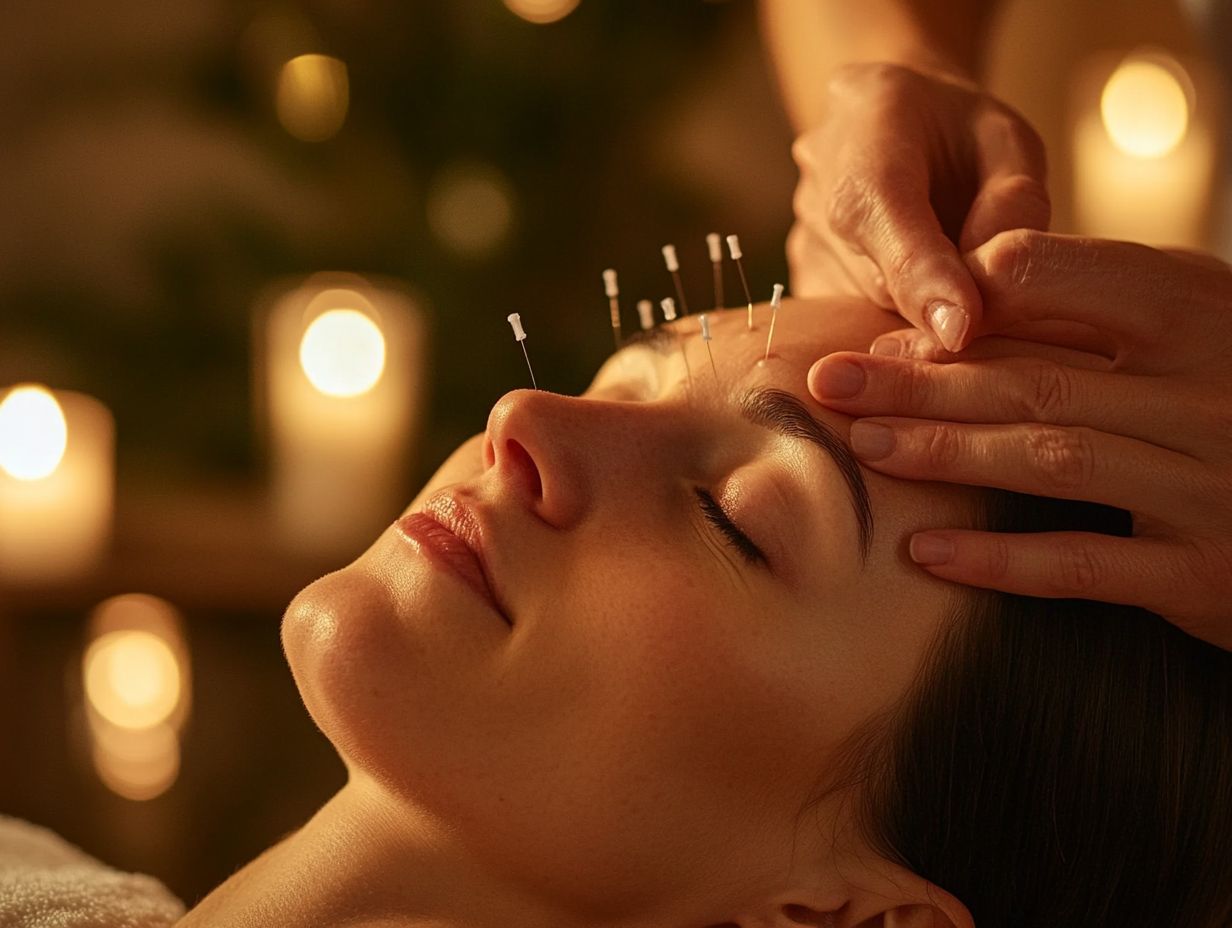
Passing the national certification exam is a necessary step to become certified in the US for Manual Acupuncture. It tests the candidate’s knowledge and ability in acupuncture techniques and practices.
This thorough test checks skills in different areas, such as anatomy, physiology, and the basics of traditional Chinese medicine.
Candidates should spend enough time looking over these important topics by using study guides, taking practice tests, and joining study groups with peers to better grasp the material.
Along with theoretical knowledge, hands-on experience is essential; thus, applicants are encouraged to engage in practical workshops or internships to hone their skills.
Passing this test certifies professionals and gives patients confidence in their skills, which helps build trust in the field and improves the quality of care.
3. State Licensing Requirements
Each state has specific licensing requirements for Manual Acupuncture, which may vary but generally include submitting proof of education, passing examinations, and maintaining continuing education credits.
These rules are important to make sure that practitioners have the skills and knowledge needed to give proper treatment. By following their state’s rules, acupuncturists maintain professional standards and play an important role in ensuring patient safety and high-quality care.
Some states might need extra certifications or special training, based on local healthcare requirements and goals. Consequently, practitioners must remain informed about their state’s regulations to avoid legal complications and provide the best possible care to their patients.
4. Continuing Education Credits
Continuing education credits are essential for licensed acupuncturists, ensuring they stay updated with the latest techniques, research, and advancements in Manual Acupuncture.
State rules mandate continuous training for professionals to improve patient care.
Each state has its own specific requirements regarding the number of hours and types of courses that must be completed within a defined period. For acupuncturists, embracing the philosophy of lifelong learning opens doors to an array of resources, including workshops, conferences, and online courses.
These opportunities help improve skills and support a better grasp of changing methods and overall health approaches, enabling practitioners to give the best care to their clients.
Frequently Asked Questions
What is manual acupuncture?
Manual acupuncture is a form of complementary medicine that involves the insertion of thin needles into specific points on the body to stimulate and balance energy flow.
What are the techniques used in manual acupuncture?
The two main techniques used in manual acupuncture are traditional Chinese acupuncture and trigger point acupuncture. Traditional Chinese acupuncture follows the principles of traditional Chinese medicine and uses points along meridians, while trigger point acupuncture targets specific muscle knots or “trigger points”.
What are the differences between manual acupuncture and other forms of acupuncture?
Manual acupuncture differs from other forms of acupuncture, such as electroacupuncture or laser acupuncture, in that it relies solely on the use of thin needles and does not involve any additional equipment or technology.
What are the benefits of manual acupuncture?
Manual acupuncture is believed to help with a variety of conditions, including chronic pain, stress, allergies, digestive issues, and more. It can also improve overall well-being and promote relaxation.
Are there any risks associated with manual acupuncture?
When performed by a trained and licensed practitioner, manual acupuncture is generally considered safe. There is a minor chance of infection or bruising where the insertions are made.
How can I become certified in manual acupuncture in the US?
The requirements for certification in manual acupuncture vary by state, but typically involve completing a training program and passing a national board examination. It is important to research the specific requirements in your state before pursuing certification.

Sheetal Sharda has a background in CS. She got an interest in Holistic living back in 2018, and has since started exploring more into Naturapathy, Holistic Living, Yoga, and more. She got inspired to start SereneClinics to help people find reliable centers across the world.
